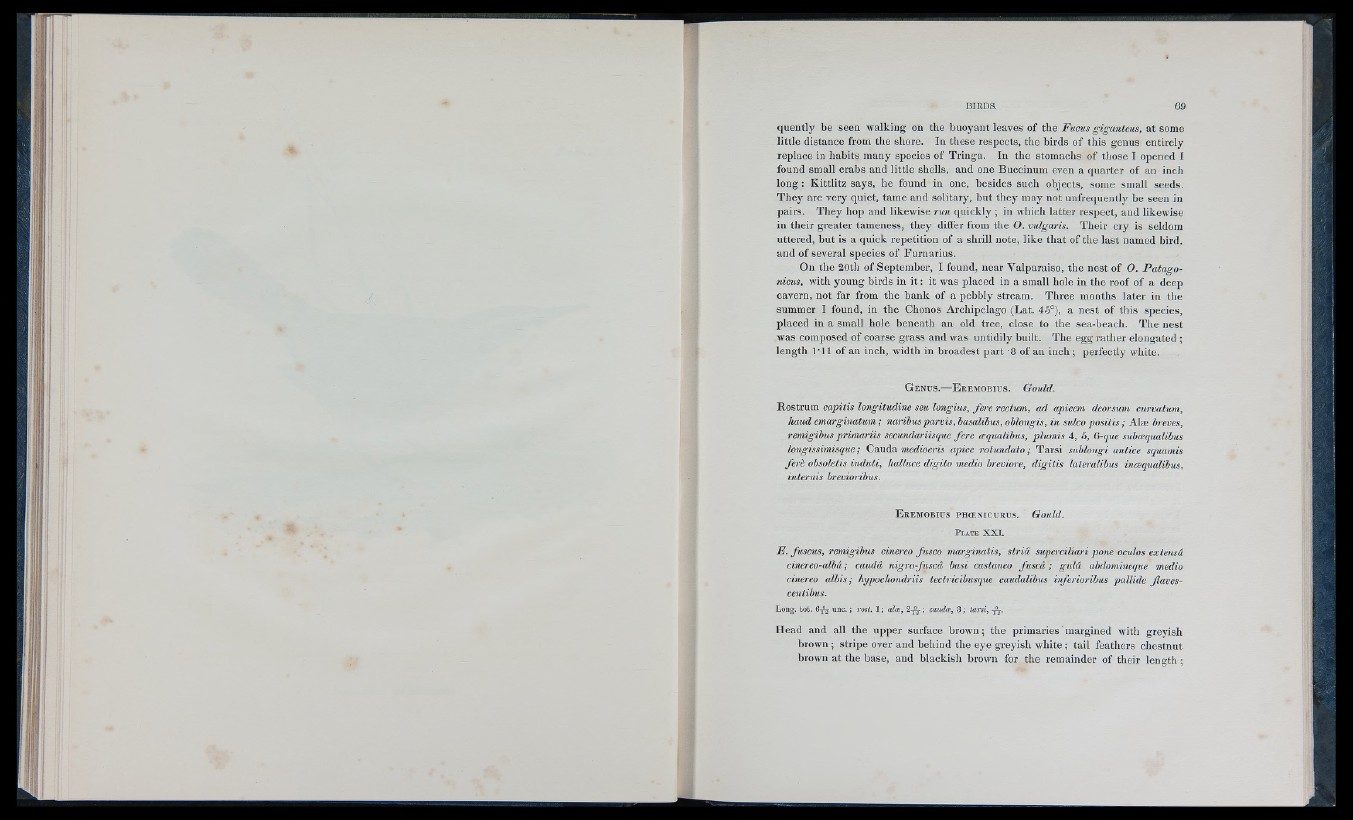
quently be seen walking on the buoyant leaves of the Fucus giganteus, at some
little distance from the shore. In these respects, the birds of this genus entirely
replace in habits many species of Tringa. In the stomachs of those I opened I
found small crabs and little shells, and one Buccinum even a quarter of an inch
long : Kittlitz says, he found in one, besides such objects, some small seeds.
They are very quiet, tame and solitary, but they may not unfrequently be seen in
pairs. They hop and likewise run quickly ; in which latter respect, and likewise
in their greater tameness, they differ from the O. vulgaris. Their cry is seldom
uttered, but is a quick repetition of a shrill note, like that of the last named bird,
and of several species of Furnarius.
On the 20tli of September, I found, near Valparaiso, the nest of O. Patagonicus,
with young birds in i t : it was placed in a small hole in the roof of a deep
cavern, not far from the bank of a pebbly stream. Three months later in the
summer I found, in the Chonos Archipelago (Lat. 45°), a nest of this species,
placed in a small hole beneath an old tree, close to the sea-beach. The nest
was composed of coarse grass and was untidily built. The egg rather elongated ;
length I' l l of an inch, width in broadest part -8 of an inch; perfectly white.
G e n u s .— E r e m o b i u s . Gould.
Rostrum capitis longitudine seu longius, fere rectum, ad apicem deorsum curvatum,
haud emarginatum ; naribus parvis, basalibus, ohlongis, in sulco positis; Alas breves,
remigibus primariis secundariisque fere eequalibus, plumis 4, 5, G-que subtxqualibus
longissimisque ; Cauda mediocris apice rotundato ; Tarsi sublongi antice squamis
ferh obsoletis induti, halluce digito medio breviore, digitis lateralibus inesqualibus,
internis brevioribus.
E r e m o b iu s p h oe n i c u r u s . Gould.
P l a t e X X I.
E. fuscus, remigibus cinereo fusco marginatis, stria superciliari pone oculos extensâ
cinereo-albâ ; caudâ iiigro-fuscâ basi castaneo fuscâ ; gulâ abdomiiieque medio
cinereo albis; hypochondriis tectricibusque caudalihus inferioribus pallide flaves-
centibus.
Long. tot. 6 -^ unc. ; rost. 1 ; aloe, 2 -^ ; caudæ, 3 ; tarsi,
Head and ail the upper surface brown; the primaries'margined with greyish
brown ; stripe over and behind the eye greyish white ; tail feathers chestnut
brown at the base, and blackish brown for the remainder of their length ;